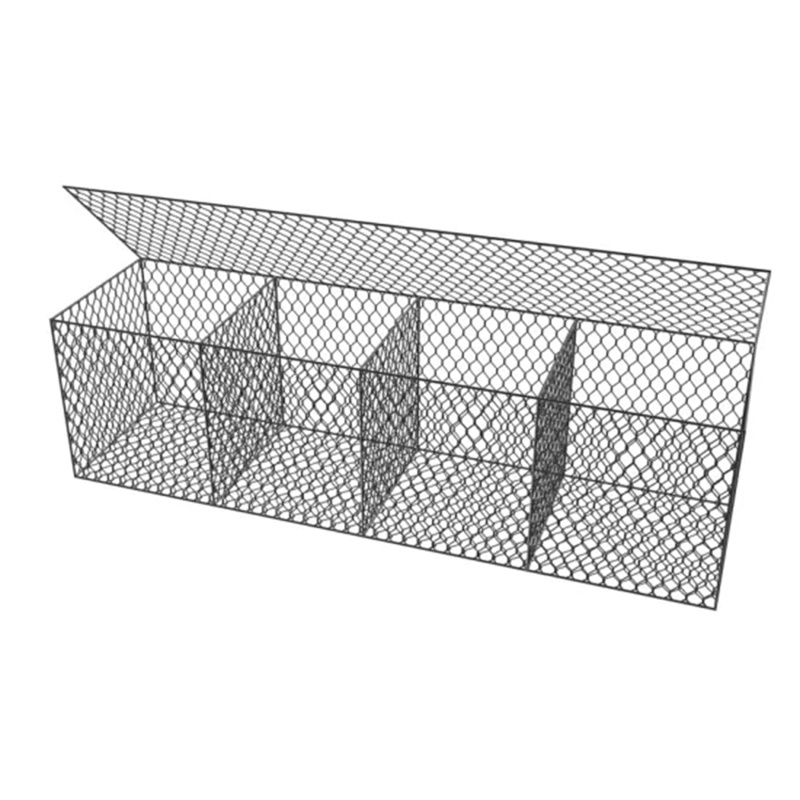Dec . 03, 2024 20:21 Back to list
Durable Stainless Steel Gabion Baskets for Versatile Landscaping and Erosion Control
The Versatility of Stainless Steel Gabion Baskets
In the realm of modern landscaping and construction, the use of gabion baskets has emerged as a popular choice for both aesthetic and practical applications. Among the various materials used to create these versatile structures, stainless steel stands out for its durability, strength, and visually appealing qualities. This article delves into the advantages of using stainless steel gabion baskets, along with their applications and benefits.
What are Gabion Baskets?
Gabion baskets are essentially wire mesh containers filled with rocks, stones, or other materials. Originally developed for erosion control and riverbank stabilization, these baskets have evolved into a versatile design element in landscaping and construction. The term gabion is derived from the Italian word gabbione, meaning big cage. This aptly describes their form and function.
Advantages of Stainless Steel Gabion Baskets
1. Durability and Longevity One of the primary benefits of stainless steel gabion baskets is their robust nature. Unlike traditional galvanized steel, which can corrode over time, stainless steel is highly resistant to rust and corrosion. This quality is particularly advantageous in environments with harsh weather conditions or exposure to water. When properly maintained, stainless steel gabion baskets can last for decades, making them a cost-effective solution over time.
2. Aesthetic Appeal Stainless steel offers a sleek, modern look that enhances the visual appeal of outdoor spaces. The reflective surface of stainless steel can create stunning effects, especially when combined with natural surroundings. The contemporary aesthetic makes these gabion baskets suitable for various design styles, from minimalist gardens to upscale landscaping projects.
3. Versatility in Design Gabion baskets are incredibly versatile in their applications. They can be used for retaining walls, fences, benches, planters, and decorative features. The flexibility in design allows builders and landscapers to be creative, crafting unique structures that suit specific needs and preferences. Furthermore, they can be filled with different materials, allowing for customization in appearance.
stainless steel gabion baskets

4. Environmental Benefits Utilizing gabion baskets contributes to sustainable practices. The natural materials used to fill the baskets can be locally sourced, reducing the carbon footprint created by transportation. Additionally, gabions help control erosion and can improve drainage in problematic areas, making them an eco-friendly choice for land management.
5. Ease of Installation Stainless steel gabion baskets are relatively easy to install. Their lightweight design allows for straightforward handling, and they can often be positioned without the need for heavy machinery. This efficiency in installation can lead to reduced labor costs and quicker project completion times.
Applications of Stainless Steel Gabion Baskets
The applications for stainless steel gabion baskets are nearly limitless. In civil engineering, they are often employed as retaining walls to prevent soil erosion and stabilize slopes. Their ability to disperse water flow makes them invaluable for drainage solutions. In landscaping, they can serve as raised garden beds, decorative barriers, or elegant seating options in public parks and private gardens.
In addition to these functional uses, stainless steel gabion baskets are frequently incorporated into artistic installations. Landscape architects and artists can create stunning sculptural features that not only serve a purpose but also enhance the beauty of the environment.
Conclusion
Stainless steel gabion baskets represent a fusion of functionality and aesthetic appeal in modern landscaping and engineering. Their durability, versatility, and sustainability position them as an ideal choice for various applications. As urban areas continue to evolve, the demand for innovative and environmentally friendly solutions will only grow, and stainless steel gabion baskets are poised to play a significant role in shaping the landscapes of the future. Whether for practical erosion control or striking artistic expressions, these structures provide an exciting opportunity to blend form and function in our outdoor spaces.
-
Why PVC Coated Gabion Mattress Is the Best Solution for Long-Term Erosion Control
NewsMay.23,2025
-
Gabion Wire Mesh: The Reinforced Solution for Modern Construction and Landscape Design
NewsMay.23,2025
-
Gabion Wall: The Flexible, Seismic-Resistant Solution for Modern Landscaping and Construction
NewsMay.23,2025
-
Gabion Wall Solutions: The Durable, Decorative, and Affordable Choice for Every Landscape
NewsMay.23,2025
-
Gabion Basket: The Durable and Flexible Alternative to Traditional Retaining Walls
NewsMay.23,2025
-
Gabion Basket: The Proven Solution for Slope Stability and Flood Control
NewsMay.23,2025
-
Versatility of Chain Link Fence Gabion
NewsMay.13,2025






